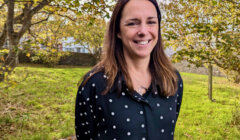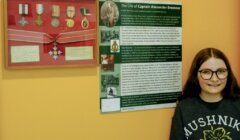Education / Poverty related education attainment gap ‘significantly narrowing’
THE POVERTY related attainment gap in Shetland which had widened during the Covid pandemic has been reduced by 15 per cent in numeracy and 12 per cent in literacy.
A report to councillors said this suggests a return to pre-pandemic levels and a “pattern of narrowing the gap over time”.
Figures for 2023 place the gap at 18 per cent for numeracy and 13 per cent for literacy – down from 33 per cent and 25 per cent respectively.
Meanwhile elected members also heard that overall literacy and numeracy attainment increased across primary one and four in Shetland in 2022/23, but decreased in primary seven and secondary three.
Quality improvement officer James Johnston added that S4 National 5 performance remains strong but S5/6 higher and advanced higher attainment is “not where it needs to be”, with work ongoing to tackle this.
The figures were presented to a meeting of Shetland Islands Council’s (SIC) education and families committee on Monday.
Johnston said the council has been judged to have made satisfactory progress in improving attainment and children and young people’s health and wellbeing.
There has been good progress in placing the rights and needs of children and young people at the centre of education.
There has also been very good progress in closing the attainment gap between the most and least disadvantaged children, and improving employability skills.
Shetland Central councillor Moraig Lyall asked if the broadening of the curriculum in primary was leaving less time for focus on core literacy and numeracy.
Johnston said literacy and numeracy is “absolutely central to all classroom practice”, but thought is being given to the demands on head teachers’ time which might take staff away from that.
At the moment the council uses the free school meal data to articulate the poverty related attainment gap in Shetland.
Become a member of Shetland News
Johnston said there was a “significant narrowing” of the gap, and he paid tribute to staff for their work.
Meanwhile Shetland’s annual local child poverty action report was also presented to Monday’s meeting.
It said the figure for children living in poverty in Shetland, after housing costs are considered, was 15.44 per cent in 2021/22 – or roughly one in every seven children.
Mirroring Scotland as a whole, child poverty in Shetland has gradually increased since the early 2010s.
When broken down by area in Shetland, Lerwick and Bressay had the highest percentage of children living in low income families in 2021/22.
It was followed by Shetland Central and then Shetland West.
Become a member of Shetland News
Shetland News is asking its many readers to consider paying for membership to get additional features and services: -
- Remove non-local ads;
- Bookmark posts to read later;
- Exclusive curated weekly newsletter;
- Hide membership messages;
- Comments open for discussion.
If you appreciate what we do and feel strongly about impartial local journalism, then please become a member of Shetland News by either making a single payment, or setting up a monthly, quarterly or yearly subscription.


















































































